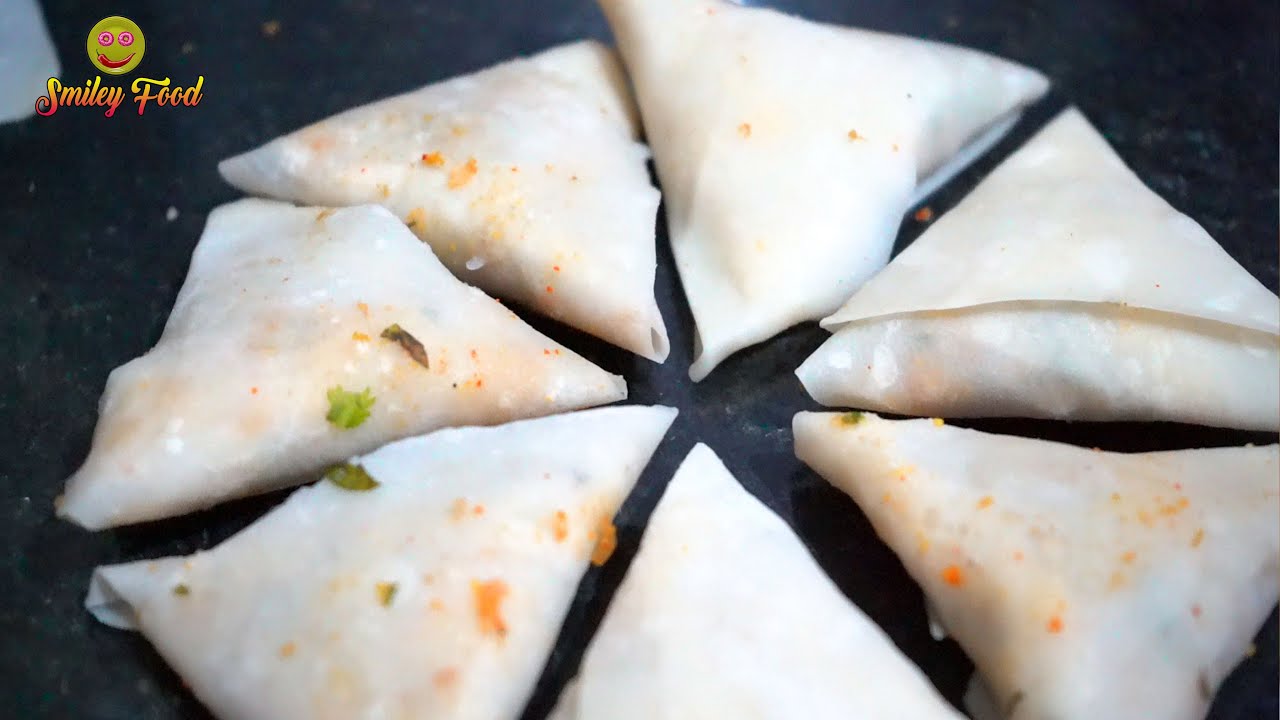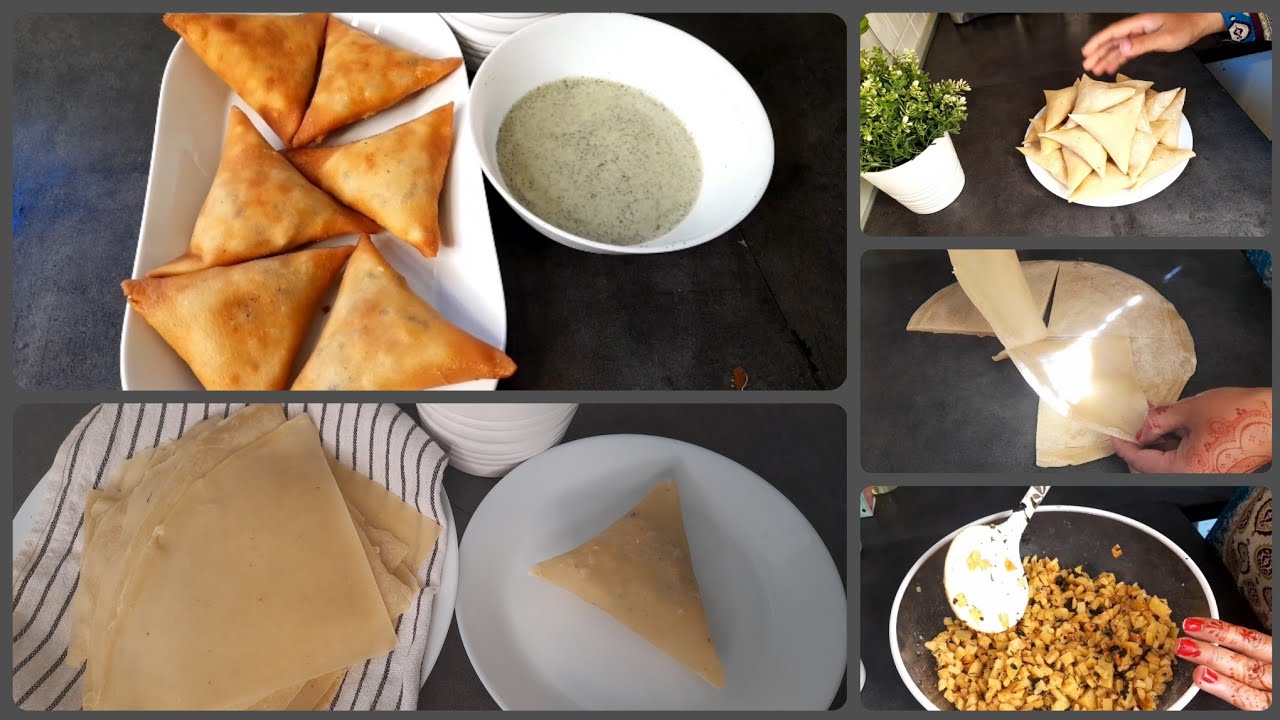Ah, samosas! These crispy, flaky pastries are a beloved snack in many cultures, especially in South Asia. But what really takes a samosa to the next level is the samosa patti, the dough that encases those delightful fillings. Making samosa patti at home is not only a fun activity but also allows you to customize the taste and texture to your liking. Forget about store-bought options; with just a few basic ingredients and some simple techniques, you can create homemade samosa patti that will impress your friends and family. Let’s dive into how you can make this essential component of the perfect samosa!
Ingredients Needed for Samosa Patti

Making samosa patti is easier than you might think! Here’s what you need to gather:
- All-Purpose Flour (Maida): 2 cups
- Ghee or Oil: 3 tablespoons (for a rich flavor)
- Salt: ½ teaspoon (to taste)
- Water: Approximately ½ cup (adjust as needed)
- Cumin Seeds: Optional, for added flavor
Tip: Using ghee will give your samosa patti a beautiful texture and enhance the taste, but you can also use vegetable oil if you prefer.
Let’s break down these ingredients a bit more:
- All-Purpose Flour: This is the base of your samosa patti. It’s what gives it structure and allows it to become that perfect, crispy shell when fried.
- Ghee or Oil: Incorporating fat into the dough is crucial. It helps create flakiness in the patti, making your samosas delightful to bite into.
- Salt: Just a pinch goes a long way in enhancing the flavor of the dough. Remember, it’s always easier to add more later than to start again!
- Water: This is your binding agent. You’ll want to add it gradually to get the right consistency—aim for a smooth, elastic dough.
- Cumin Seeds: While optional, adding a teaspoon of cumin seeds can elevate the flavor profile. It gives a slight nuttiness that pairs beautifully with the filling.
With these ingredients in hand, you’re ready to embark on your journey to making delicious and satisfying samosa patti. Stay tuned for the next steps where we’ll guide you through the preparation process! Your homemade samosas are just around the corner.
Also Read This: Is There an App to Download Dailymotion Videos? A Guide to Legal Downloading Tools
3. Step-by-Step Instructions to Make Samosa Patti

Making samosa patti at home is easier than you might think! With just a few basic ingredients, you can have delicious, homemade dough ready to fill with your favorite samosa fillings. Let’s dive into the step-by-step instructions!
Ingredients:
- 2 cups all-purpose flour
- 4 tablespoons oil or ghee
- ½ teaspoon salt
- Water (as needed)
Step 1: Combine Dry Ingredients
In a large mixing bowl, combine the all-purpose flour and salt. Whisk them together to ensure an even distribution.
Step 2: Add Oil or Ghee
Now, add the oil or ghee to the flour mixture. Use your fingertips to rub the fat into the flour until the mixture resembles coarse crumbs. This step is crucial as it helps to make the samosa patti flaky!
Step 3: Knead the Dough
Gradually add water, a little at a time, while mixing the flour with your other hand. Once the dough starts coming together, knead it on a lightly floured surface for about 5-7 minutes until it’s smooth and elastic. The goal is to have a soft, yet firm dough.
Step 4: Rest the Dough
Cover the dough with a damp cloth or plastic wrap and let it rest for at least 30 minutes. Resting allows the gluten to relax, making it easier to roll out the patti later.
Step 5: Divide the Dough
After the resting period, divide the dough into equal portions (usually around 10-12 pieces). Roll each portion into a smooth ball.
Step 6: Roll Out the Patti
On a lightly floured surface, take one dough ball and roll it out into a thin circle or oval shape. Aim for about 6-8 inches in diameter. Don’t worry about getting it perfect; practice makes perfect!
Step 7: Cut the Patti
Once you have your circle, use a knife to cut it in half. You now have two semi-circles.
Step 8: Form the Cone
Take one semi-circle and roll it into a cone shape, sealing the edge with a bit of water. Ensure that the bottom end of the cone is completely sealed so that the filling doesn’t leak out.
Step 9: Fill the Cone
Fill the cone with your desired filling, then wet the top edge and seal it by pinching the edges together. Repeat this process for each piece of dough. Your samosa patti is now ready for frying or baking!
Also Read This: How to Create a Simple Hairstyle for School with Quick Dailymotion Tips
4. Tips for Perfect Samosa Patti

Crafting perfect samosa patti takes a bit of practice, but with these handy tips, you’ll be on your way to making them like a pro!
- Use Cold Ingredients: When making the dough, ensure that your water (and even the oil or ghee) is cold. This helps in creating a flaky texture.
- Don’t Rush the Resting Period: Allowing the dough to rest is essential. It helps relax the gluten, making it much easier to roll.
- Thinness Matters: Roll out your patti as thin as possible without tearing it. The thinner the patti, the more flaky and crispy it will be once cooked!
- Keep the Dough Covered: If you’re not using all the dough at once, keep the remaining pieces covered with a damp cloth to prevent them from drying out.
- Seal It Well: Ensuring that the edges of the samosa are sealed tightly is key; otherwise, the filling could spill out while frying.
- Experiment with Flavors: You can infuse the dough with spices like cumin or ajwain (carom seeds) for an extra flavor boost!
- Practice Makes Perfect: If your first few attempts aren’t perfect, don’t get discouraged! Making samosa patti is an art, and practice will definitely improve your skills.
With these steps and tips, you'll find making samosa patti at home to be a delightful and rewarding experience. Enjoy the process and savor the delicious results!
Also Read This: How to Load Dailymotion Videos Efficiently
5. Common Mistakes to Avoid When Making Samosa Patti

Making samosa patti might seem simple, but there are several common pitfalls that can turn your delightful creation into a culinary disappointment. Let’s take a look at the most frequent mistakes and how to avoid them:
- Using the Wrong Flour: Ensure you're using all-purpose flour or a good quality whole wheat flour. Some might think they can substitute with cake flour, but it won’t give you that perfect crispy texture.
- Ignoring the Resting Time: After kneading the dough, give it some time to rest. This allows the gluten to relax, making it easier to roll out the patti. If you skip this step, your dough will be tough and hard to work with.
- Not Using Enough Water: While you want a firm dough, be careful not to make it too dry. If your dough isn’t pliable, adding a bit more water (gradually) can help achieve the right consistency.
- Over or Under Rolling: When rolling out the dough, ensure that the thickness is even. If it’s too thick, your patti won’t cook properly, and if it’s too thin, it may tear. Aim for about 1-2 mm thick.
- Skipping the Oil: Adding a bit of oil to the dough not only enhances flavor but also contributes to flakiness. Don’t skip this essential ingredient!
- Folding Mistakes: When folding the patti, ensure the edges are sealed well. If not, the filling may escape during frying, leading to messy samosas.
- Not Frying at the Right Temperature: This is crucial! If the oil is too hot, your patti will cook on the outside while remaining raw inside. If it’s too cold, they will absorb too much oil and turn greasy. The ideal frying temperature is around 350°F (175°C).
Avoiding these common mistakes will ensure that your samosa patti turns out crispy, tasty, and as delightful as you’d expect. Remember, practice makes perfect!
Also Read This: How to Cast Dailymotion from the App to Your Smart TV
6. Serving Suggestions for Samosa Patti
Once you've perfected that samosa patti, it’s time to think about how to serve them up! Here are some delicious suggestions to elevate your samosa experience:
- Classic Chutneys: Pair your samosas with tangy mint chutney, spicy tamarind chutney, or yogurt sauce. These dips add an explosion of flavor that complements the crispy patti beautifully.
- Fresh Salad: Serve your samosas with a refreshing salad made of diced tomatoes, cucumbers, and onions tossed with lemon juice and chaat masala. This offers a nice contrast to the warm, crispy samosas.
- Chaat Style: Crumble your samosas over a plate of curd and top with chopped onions, cilantro, sev, and a drizzle of tamarind and mint chutneys. This creates a delicious chaat dish that’s hard to resist!
- Tea Time Snack: Pair your samosas with a hot cup of masala chai for a delightful afternoon snack. The warmth of the tea complements the crispiness of the samosas perfectly.
- With a Twist: For a fun twist, consider filling your samosa patti with non-traditional ingredients like cheese and jalapenos or even chocolate for a sweet treat!
Remember, samosa patti are incredibly versatile. They can be served as appetizers, snacks, or even as part of a larger meal. Experiment with your favorite flavors and dishes to find what you love best!
Conclusion and Final Thoughts
Making samosa patti at home is a rewarding and enjoyable process that enables you to create delicious, crispy samosas from scratch. With just a few basic ingredients, you can achieve a perfect dough that is both flexible and easy to work with. Remember the following key points:
- Quality Ingredients: Use fresh flour and ample water to achieve the right consistency.
- Resting the Dough: Allowing the dough to rest prevents it from becoming too elastic, making it easier to roll out.
- Proper Thickness: Aim for thin sheets to ensure your samosa patti cooks evenly and crisps up nicely.
- Storage Tips: If you make extra, stack the sheets with parchment paper in between and store them in an airtight container or freezer for later use.
By following the steps outlined in your recipe, you can create a versatile base for a variety of different fillings, from traditional spiced potatoes to innovative meat or vegetable blends. The magic lies in your creativity when it comes to stuffing and shaping your samosas. Serving them with chutneys or dipping sauces can elevate the experience further.
In conclusion, crafting your own samosa patti at home not only enhances your culinary skills but also allows you to enjoy a fresh, homemade snack that can be tailored to your taste. Happy cooking!
 admin
admin








